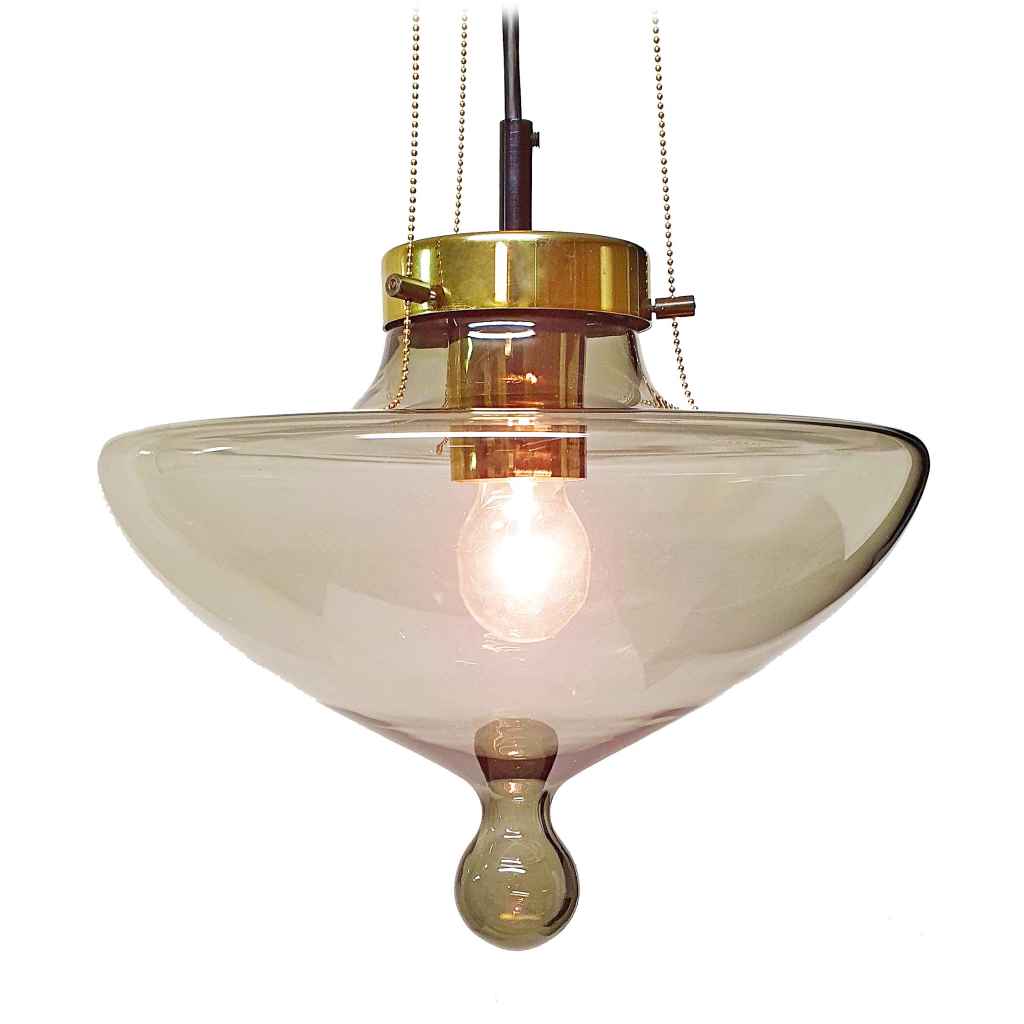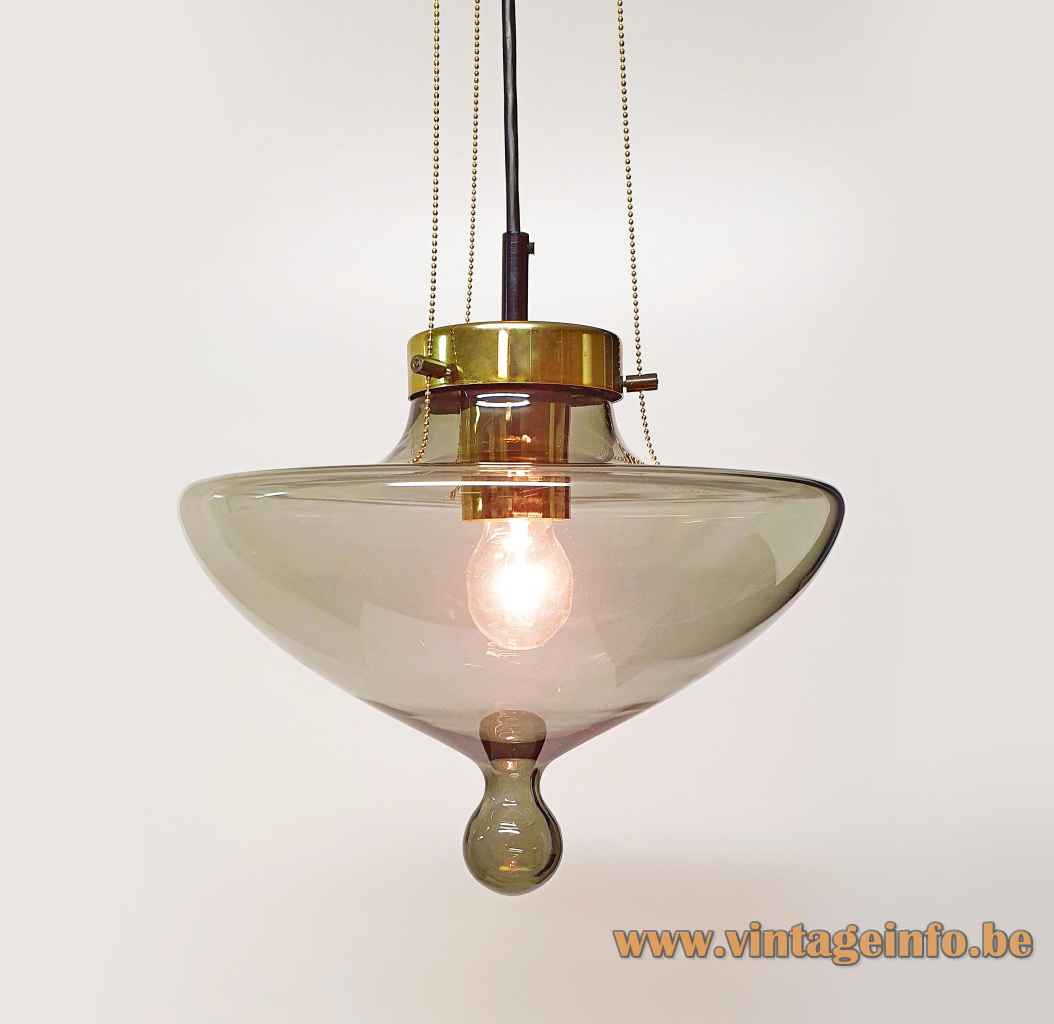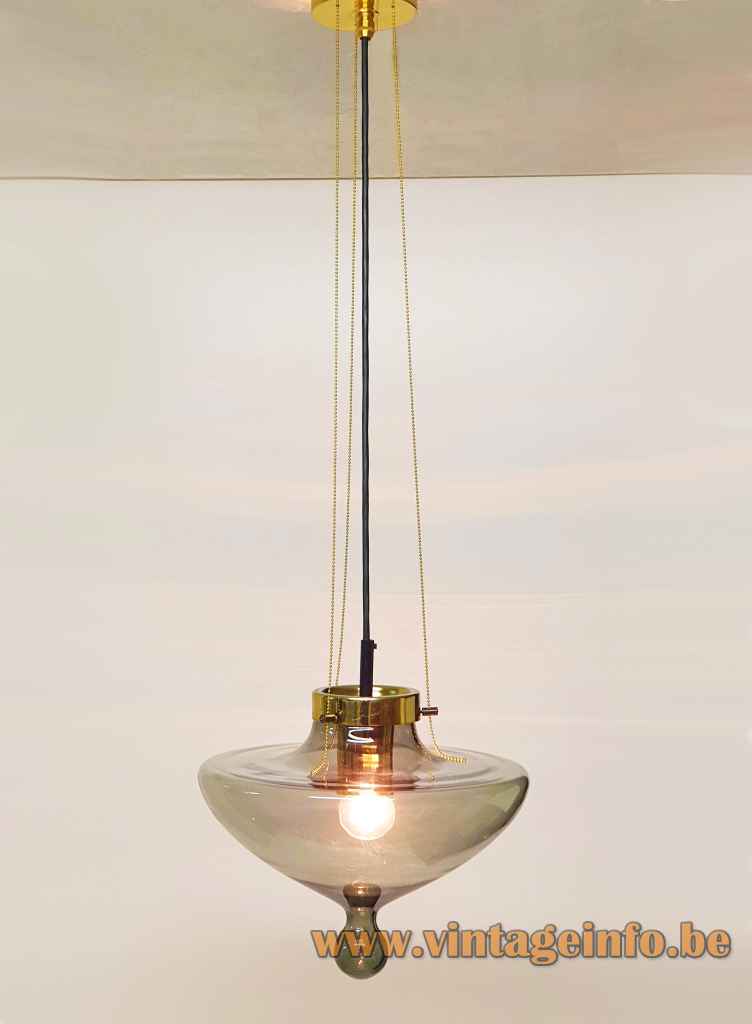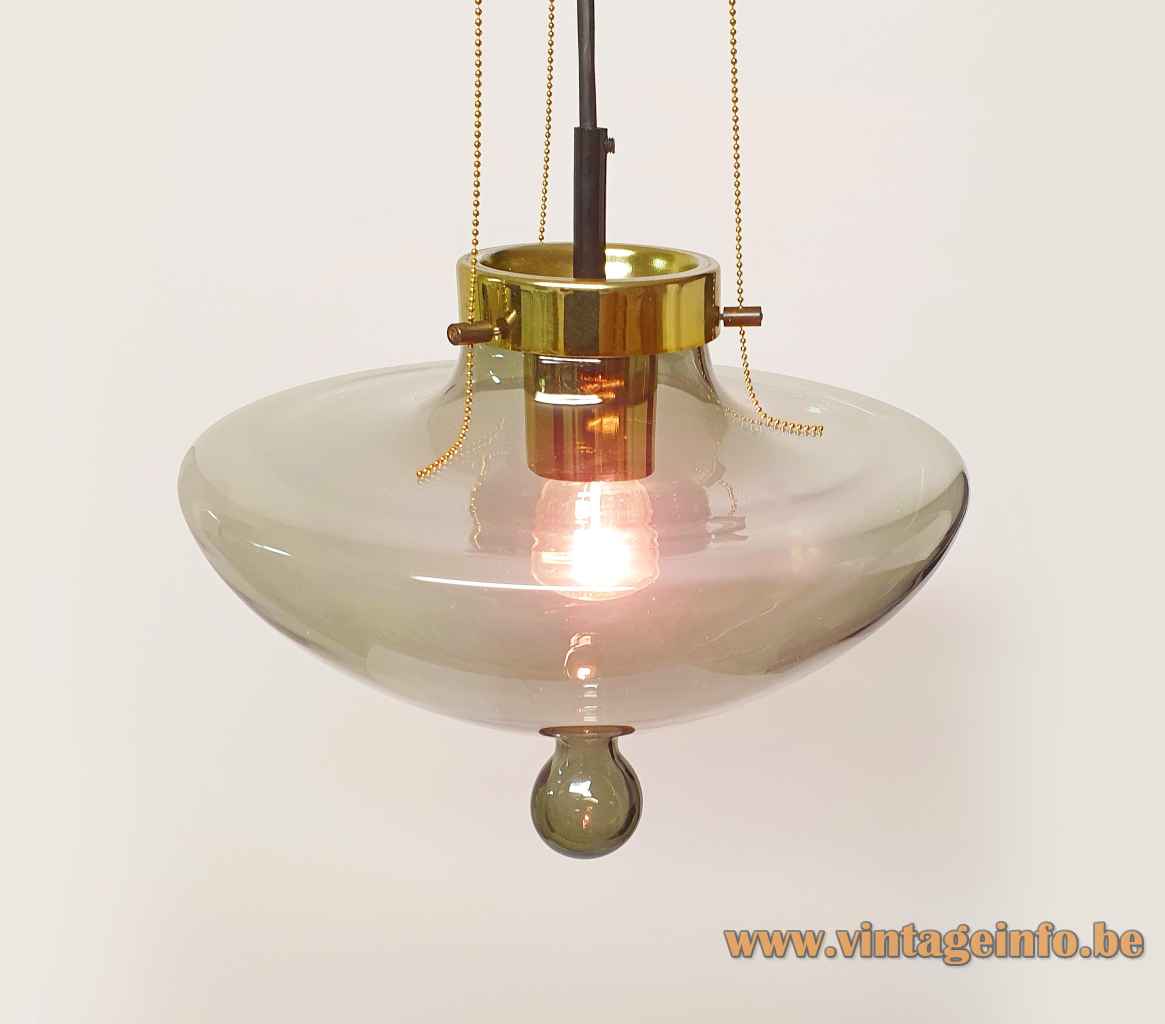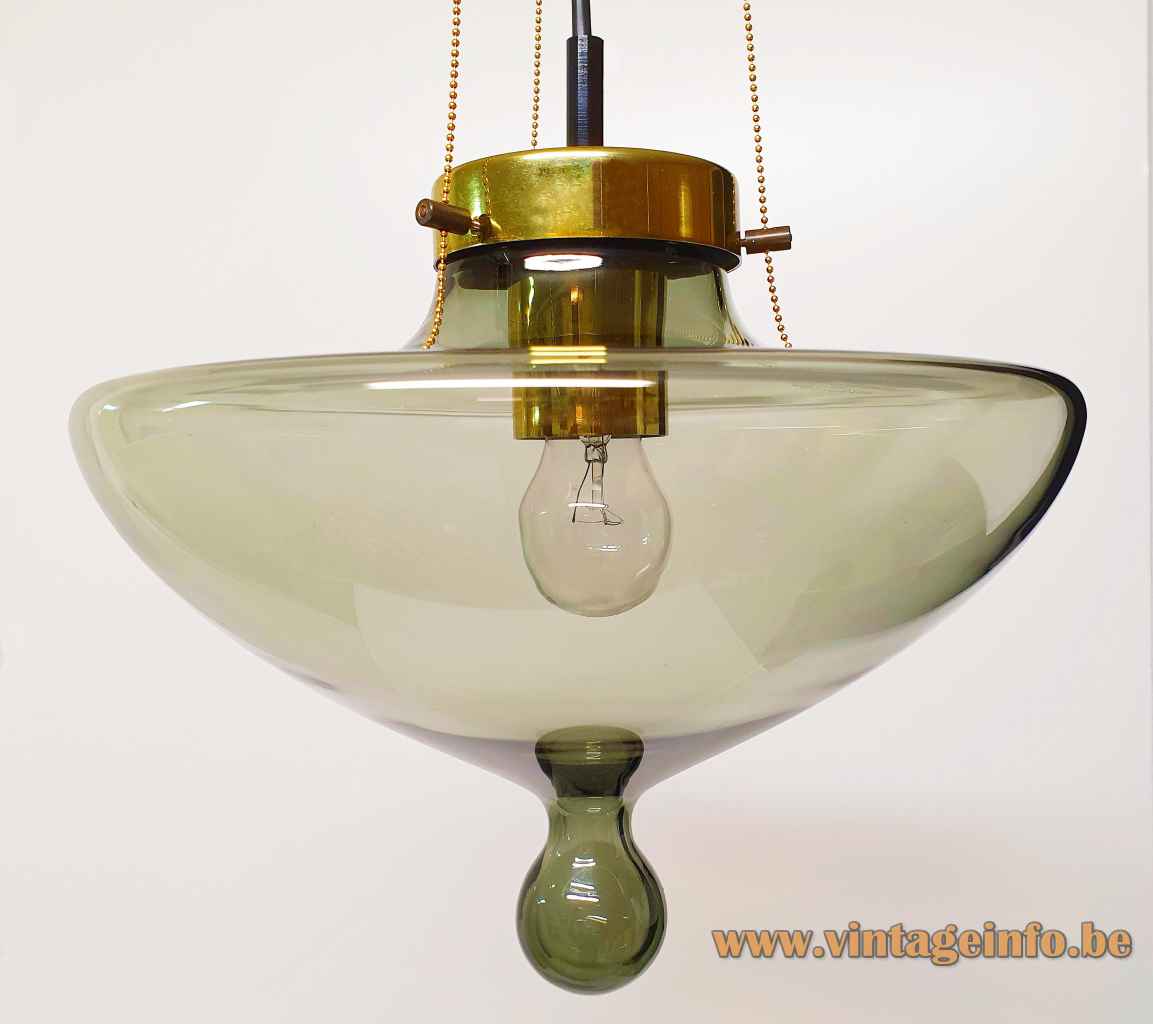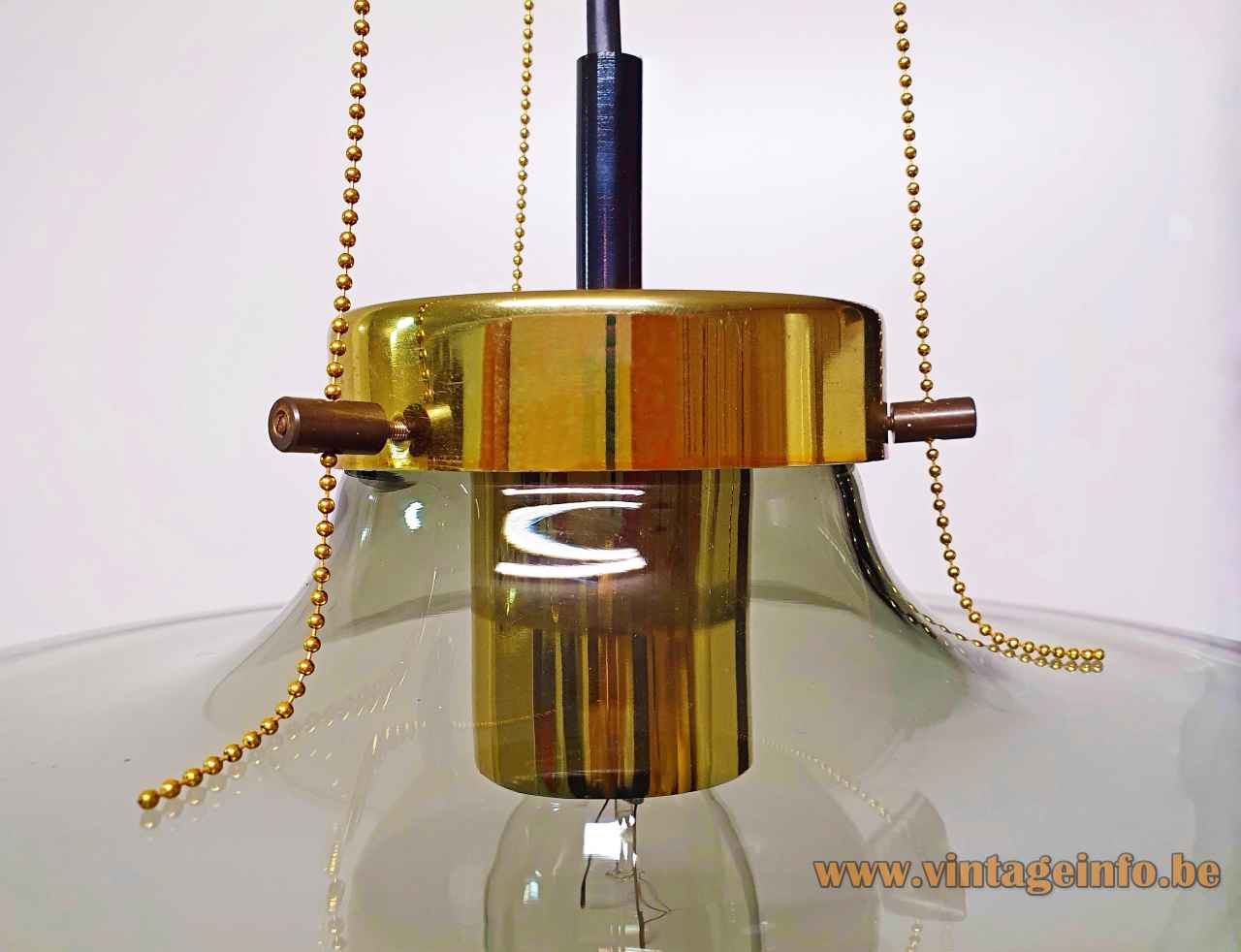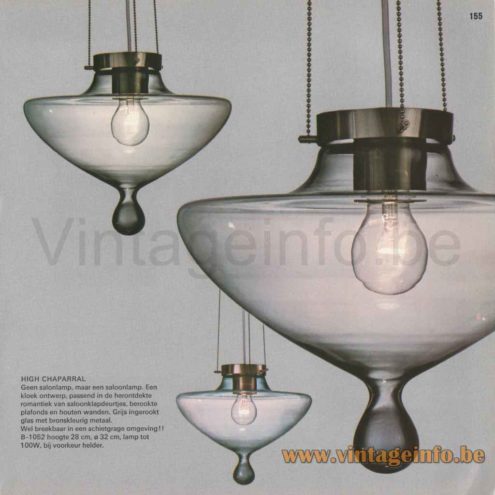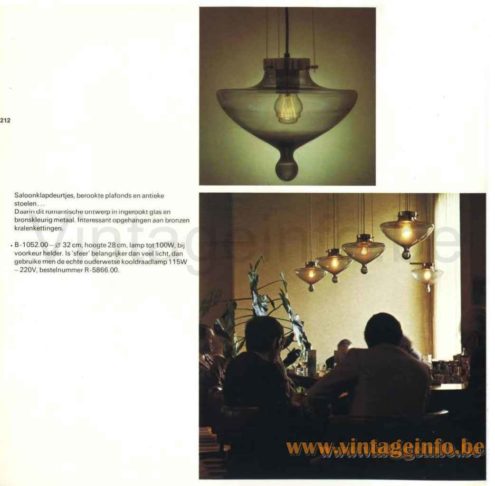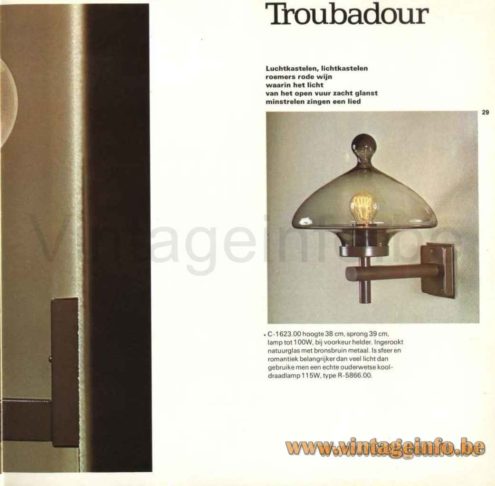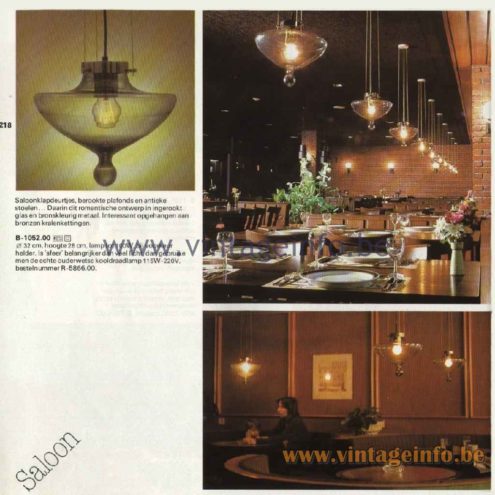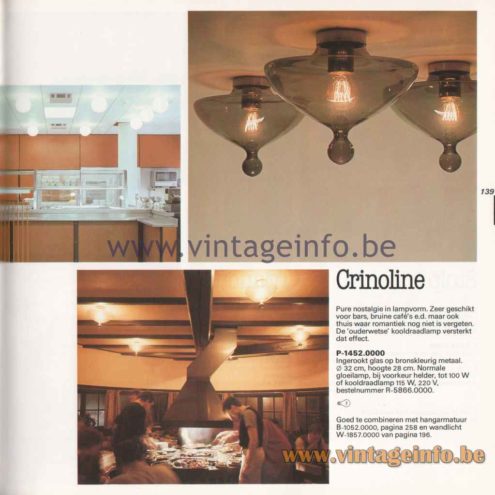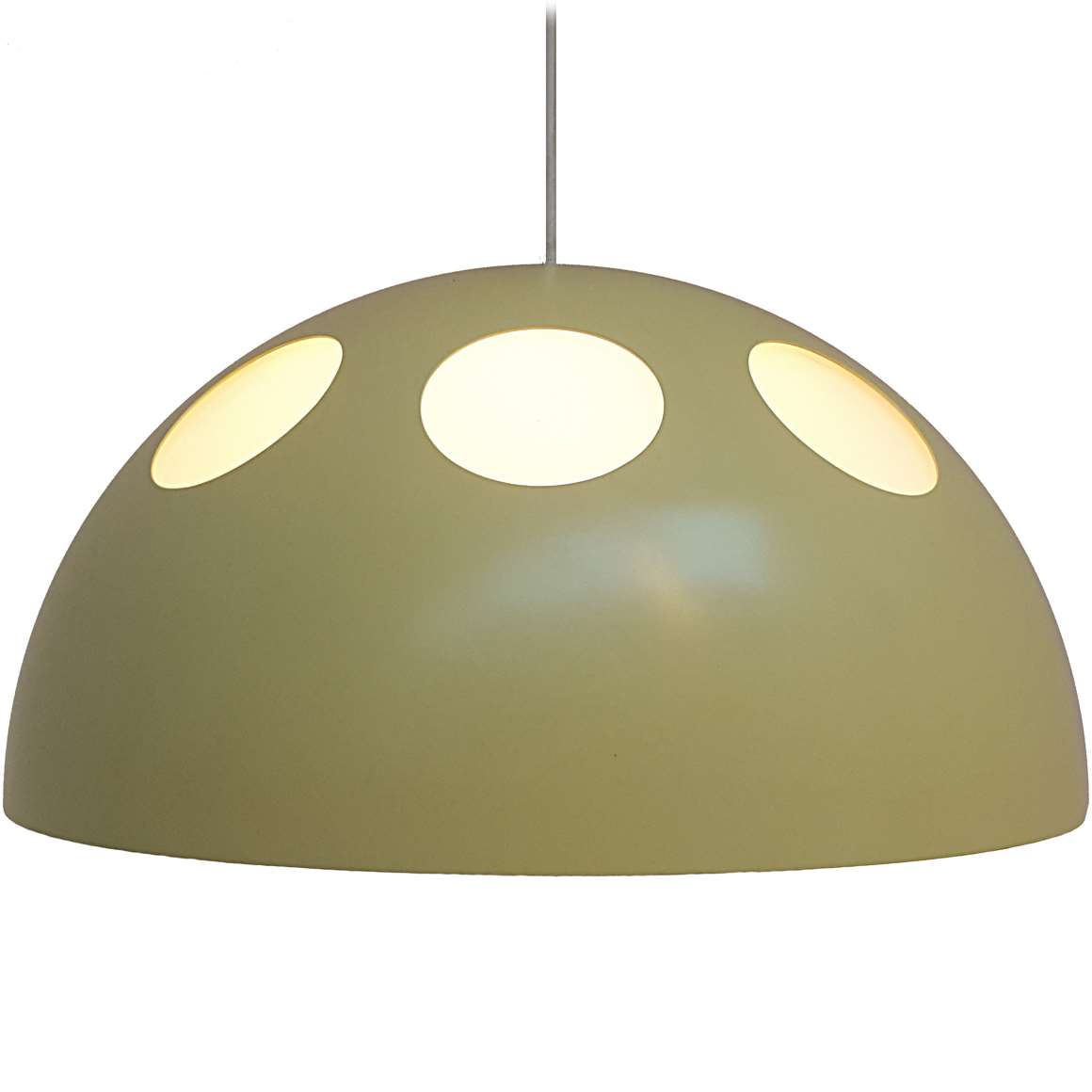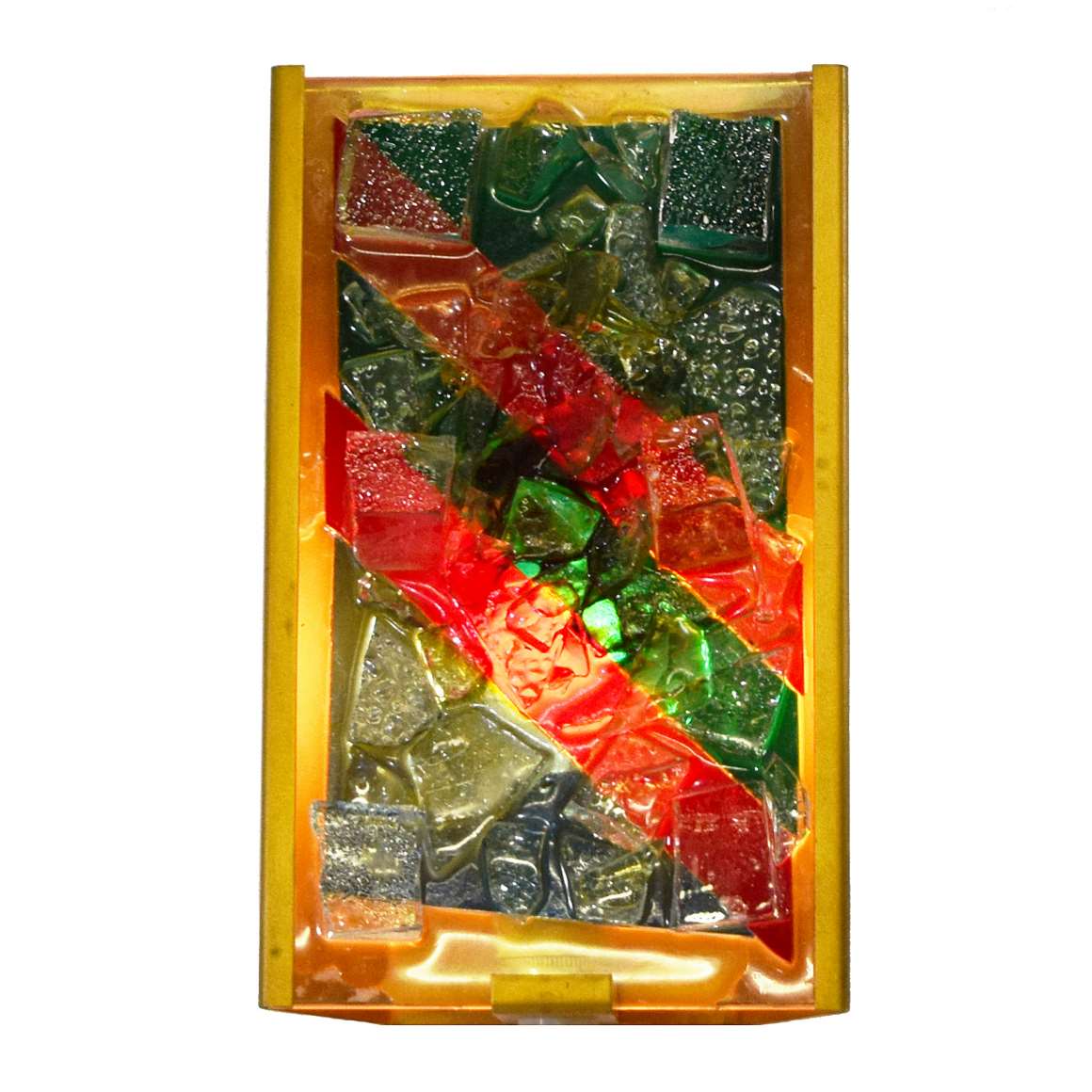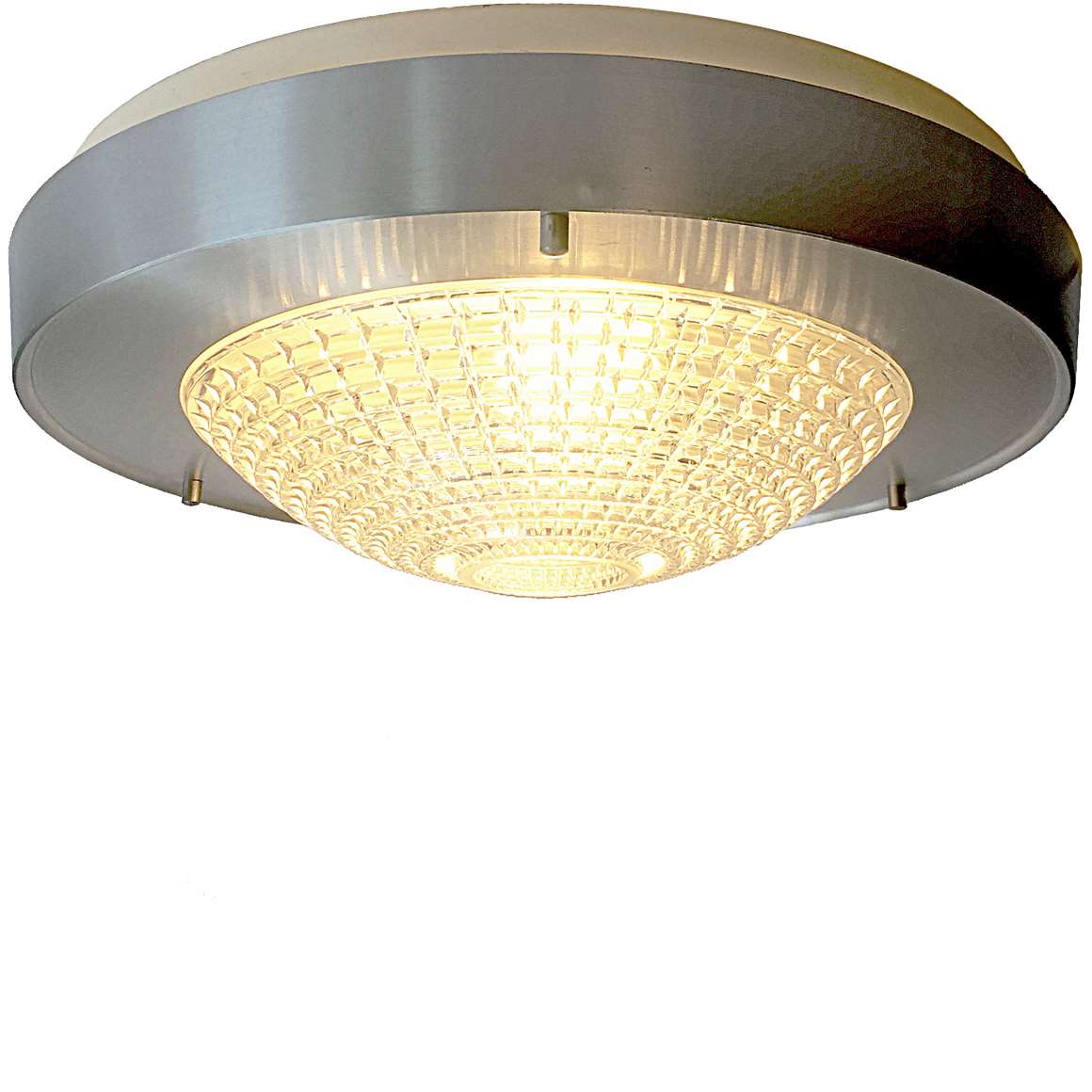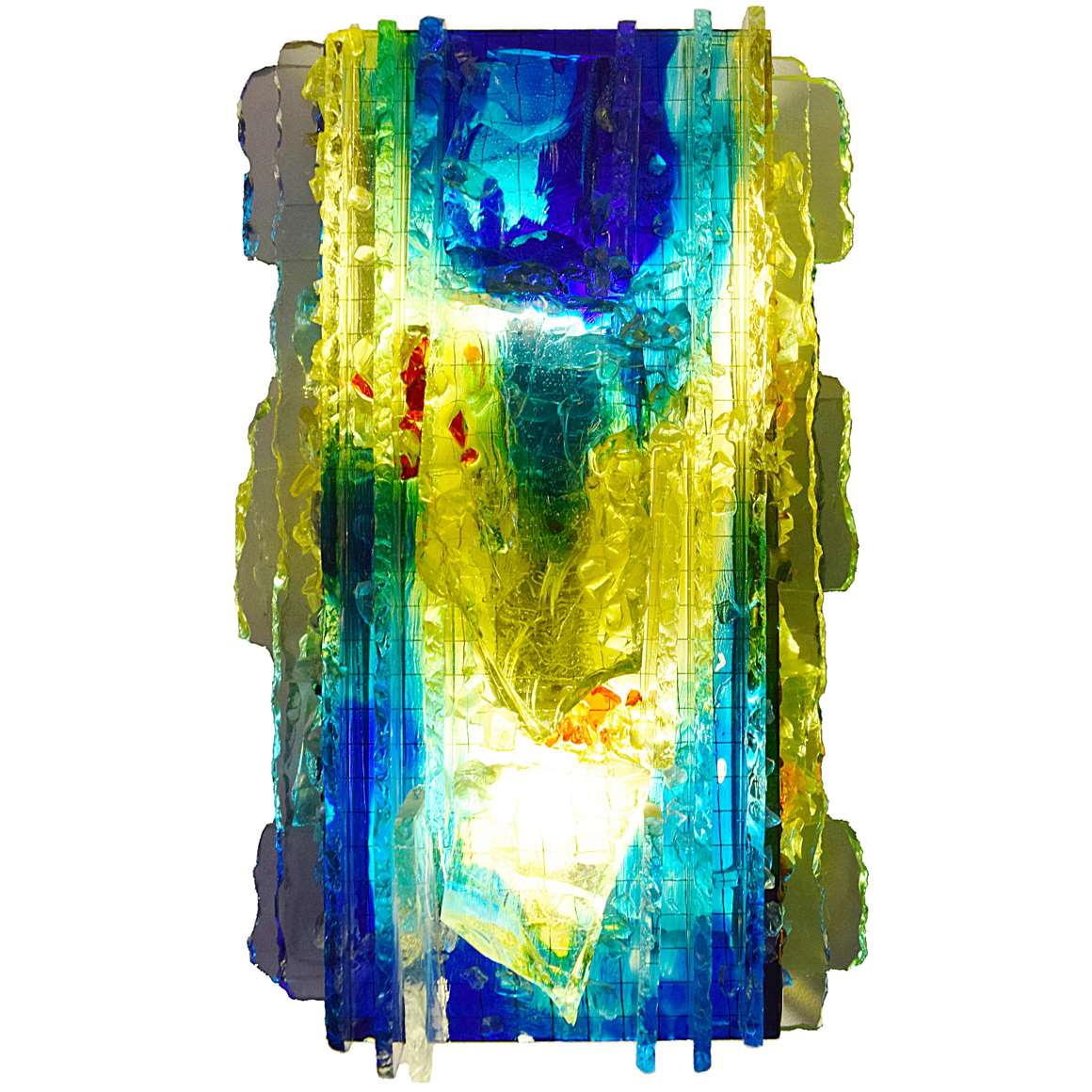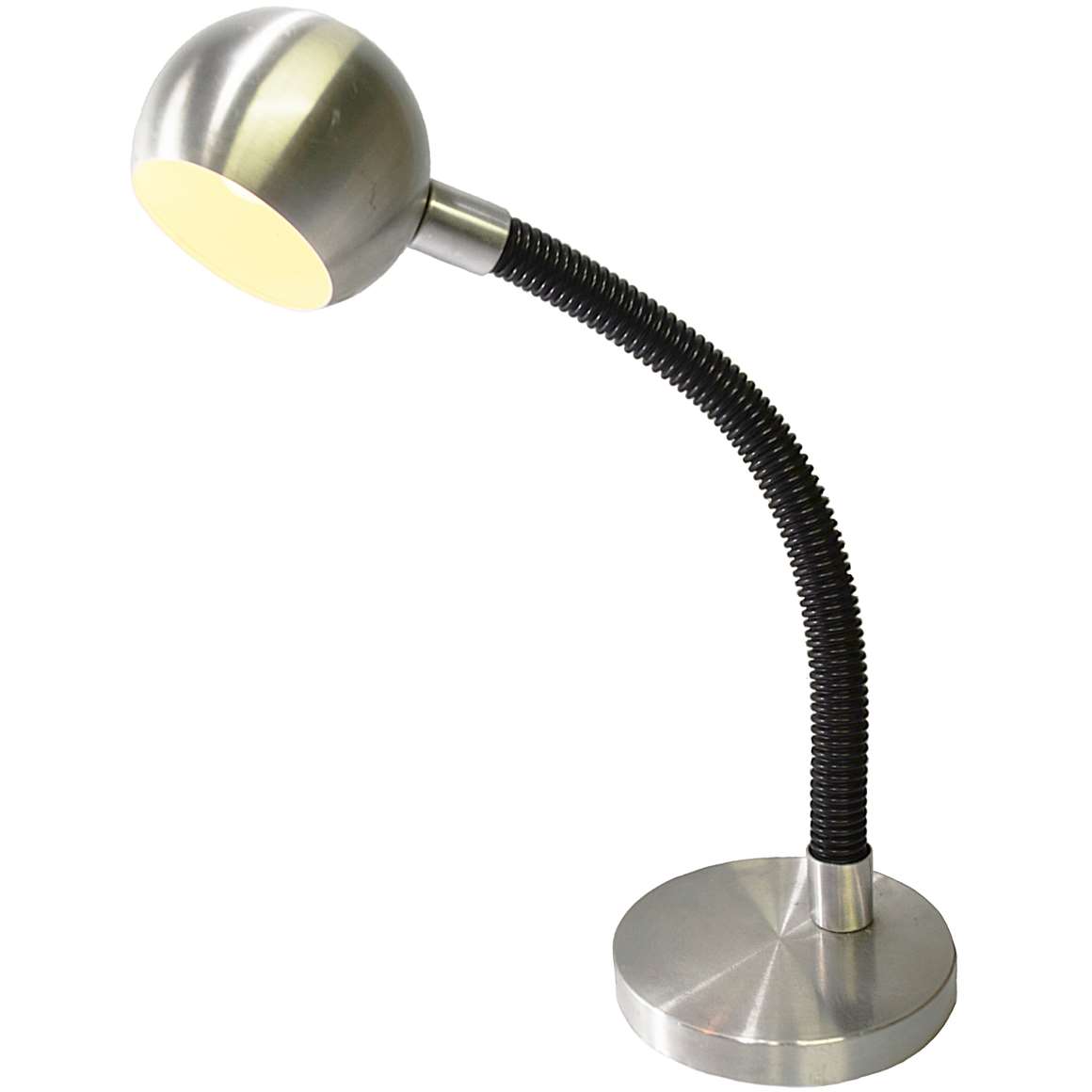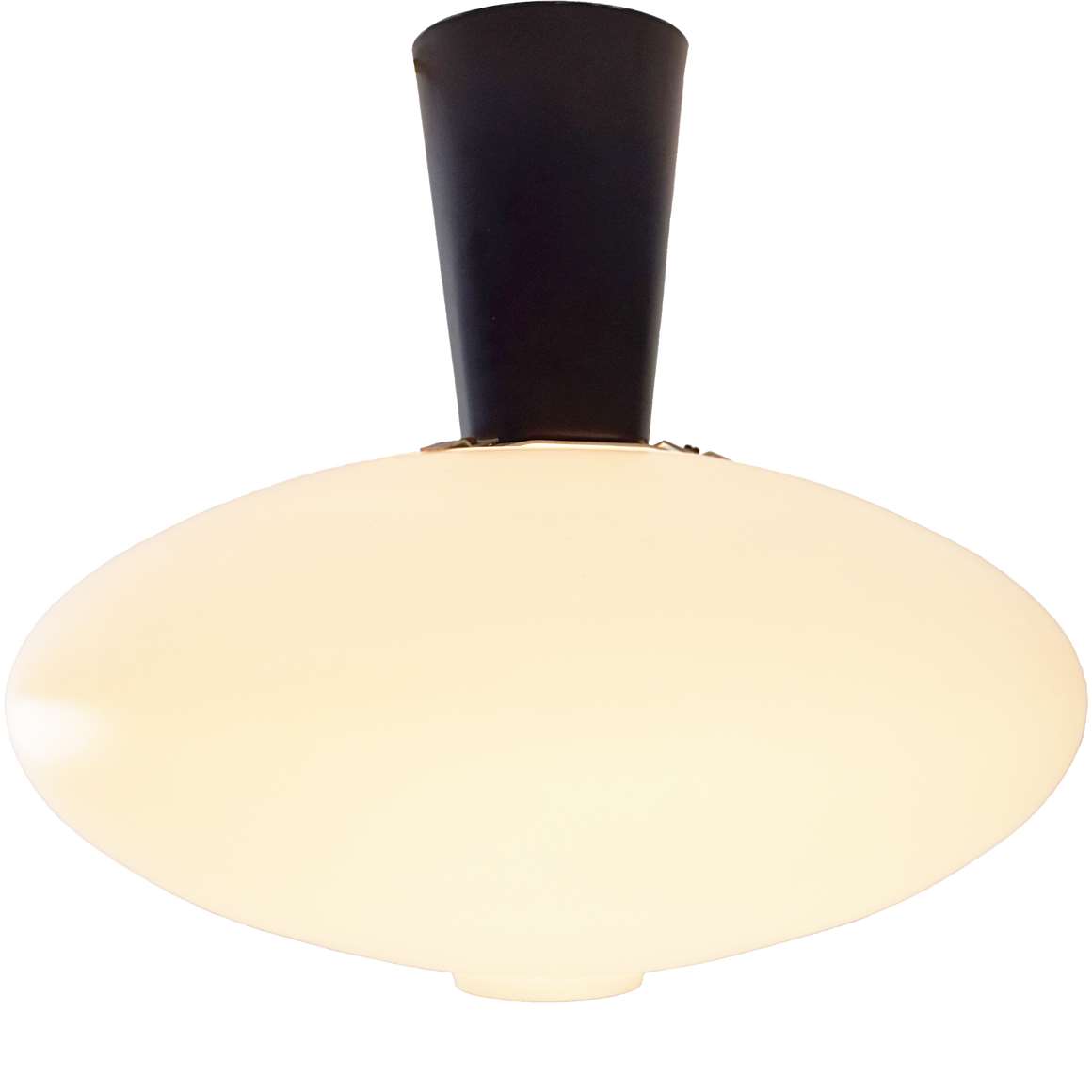Raak High Chaparral pendant lamp B-1052 – 1968 catalogue picture
Raak High Chaparral pendant lamp B-1052 – Translated text from the 1968 catalogue
HIGH CHAPARRAL
Geen salonlamp, maar een saloonlamp. Een
kloek ontwerp, passend in de herontdekte
romantiek van saloonklapdeurtjes, berookte
plafonds en houten wanden. Grijs ingerookt
glas met bronskleurig metaal.
Wel breekbaar in een schietgrage omgeving!!
B-1052 hoogte 28 cm, 0 32 cm, lamp tot
100W, bij voorkeur helder.
HIGH CHAPARRAL
Not a salon lamp, but a saloon lamp.A
bold design, fitting in the rediscovered
romance of saloon folding doors, smoked
ceilings and wooden walls.Smoked gray
glass with bronze-colored metal.
Fragile in a trigger-happy environment!!
B-1052 height 28 cm, 0 32 cm, lamp up to
100W, preferably clear.
Raak High Chaparral pendant lamp B-1052 – 1972 catalogue picture
Links (external links open in a new window)
Vintageinfo
1968 catalogue: Raak High Chaparral pendant lamp
1972 catalogue: Raak High Chaparral pendant lamp
1978 catalogue: Raak High Chaparral pendant lamp
Many thanks to Ger for the pictures.
Raak High Chaparral Pendant Lamp
Materials: Hand blown smoked droplet glass lampshade. Round brass coloured lampshade holder. Brass pearl chain. Brass ornamental screws and parts. Porcelain E27 socket.
Cord: 50 – 105 cm / 19.68 – 41.33”- adjustable
Lampshade: ∅ 35 x 30 cm / 13.77 x 11.81”
Electricity: 1 bulb E27, 1 x 100 watt maximum, 110 /220 volt.
Any type of light bulb can be used. Not a specific one preferred.
Period: 1960s, 1970s, 1980s.
Designer: To be appraised.
Manufacturer:Raak, Aalsmeer, The Netherlands.
Other versions: The Raak High Chaparral pendant lamp exists as a wall lamp, outdoor wall lamp and flush mount. The wall lamp was made with several different wall mounts over time.
The Raak High Chaparral was made for a long time. You find it with labels from Raak, Amsterdam and Raak, Aalsmeer. The company was first located at the Prinsengracht 777 in Amsterdam. After the company was sold to ITT in 1974 it moved to Aalsmeer. This one is labeled Aalsmeer.
The designer is not mentioned in the catalogues, unfortunately. But the design is very similar with the droplet lamps from Florence, Italy. You find them everywhere in the streets and houses. The Targetti Sankey company, also from Florence made several lamps in this style. A chandelier can be found over here. A table lamp over here.
Other names
The first name of this pendant lamp is High Chapparal. In 1972 it became Troubadour. In the 1978 catalogue it is named Saloon. Crinoline was the last name used in the 1982 catalogue.
Raak
The Dutch company Raak was founded in 1954 by Carel O. Lockhorn (18 June 1923 – 6 October 2004), a previous employee of Philips Lighting Eindhoven. Raak, which means “to hit” in Dutch, implies design which precisely “hits the nail on the head”.
Raak is best known for their organic modern design of the 1960s and 1970s which combined glass & metals for a sophisticated futuristic style.
The light company collaborated with several international designers and architects, including Bertrand Balas, Evert Jelle Jelles, Frank Ligtelijn, Ger Vos, Jan Jasper Fayer, Li Helo, Maija-Liisa Komulainen, Nan Platvoet, Nanny Still-Mackinney, Nico Kooi, Sergio Asti, Tapio Wirkala, Willem van Oyen, Ad van Berlo and many others.
Collaborations
Raak also collaborated with other companies. They worked with the German Peill+Putzler for the Raak Globe lamps. Peill+Putzler produced the glass. They also sold lamps made by Peill+Putzler, such as a pendant lamp designed by Aloys Ferdinand Gangkofner. For the Raak Discus the glass was made by Bega, also a German company. For the Stalactites flush mounts a cooperation with the Belgian Val Saint Lambert was undertaken in the late 1950s. Raak also sold some lamps that were produced by Staff Leuchten (Staff & Schwarz Leuchtenwerke GMBH) from Germany. iittala from Finland produced the glass for the Suomi pendant lamps, and so on…
Carel Lockhorn sold the company in 1974 to ITT but remained a director until 1977. In 1980 Raak merged with BIS Lighting from Aalsmeer, also in The Netherlands and was renamed into BisRaak. In 1986 the Raak company became independent again. The company got a business appearance and only the colours white, black and grey were still processed.
In 1999, Raak merged with Artilite B.V. and Indoor B.V. and became CLA: Centrum voor Lichtarchitectuur B.V. in Drachten (Centre for Light Architecture). Lichtarchitectuur (light architecture) was the Raak tagline from the beginning in the 1950s. The Centre for Lighting Architecture was founded by Egbert Keen. The company was declared bankrupt on 19-05-2011.
Raak received 26 iF Design Awards. They only started participating since 1980. Otherwise it would undoubtedly have been many more.
